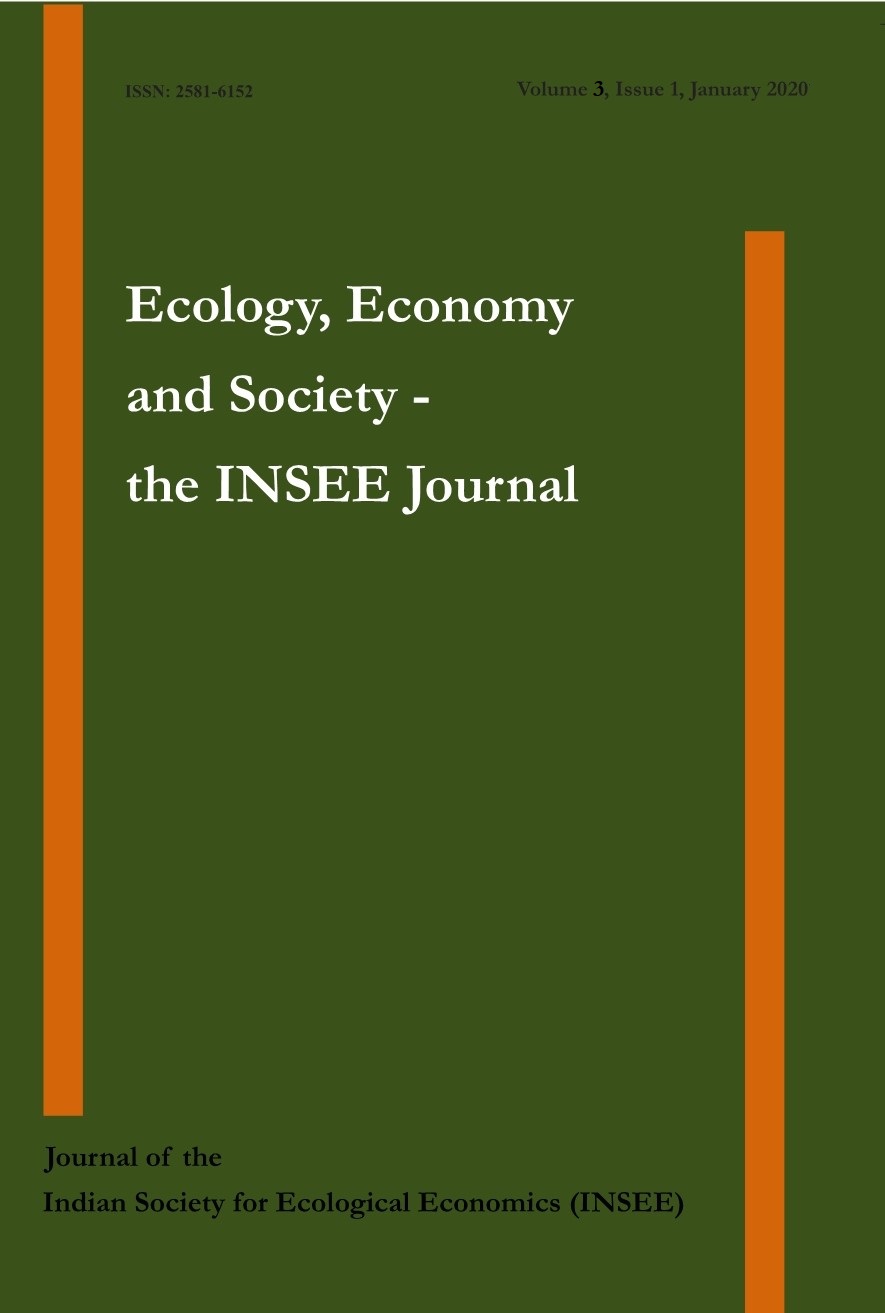Co-Location, Socioeconomic Status and Perceptions of Environmental Change in the Indian Sundarbans
DOI:
https://doi.org/10.37773/ees.v3i1.88Keywords:
Commons, Collective Action, Environmental Perceptions, Sundarbans, IndiaAbstract
Research on determinants of collective action in the commons generally focuses on interest-group heterogeneity, implicitly assuming that groups perceive the same problems but have different priorities. This paper changes the focus to the role played by perceptions themselves. Within localities, collective action may be easier if elite and non-elite households have similar assessments of environmental risks. Regionally, collective action may be aided by common assessments among local elites who communicate across village lines. This paper uses regression analysis to explore variations in environmental risk assessments across socioeconomic classes and localities, using new survey data from the Indian Sundarbans. We find that assessments vary significantly across localities. At the same time, assessments among elite households vary significantly more than assessments among non-elite households. Our results, therefore, favour locally-oriented collective action in the region, along with local governance that promotes non-elite participation.
Downloads
Additional Files
How to Cite
Issue
Section
License
Copyright (c) 2020 Susmita Dasgupta, Bansari Guha , David Wheeler

This work is licensed under a Creative Commons Attribution-NonCommercial 4.0 International License.
Copyright
The author(s) retain copyright on work published by INSEE unless specified otherwise.
Licensing and publishing rights
Author(s) of work published by INSEE are required to transfer non-exclusive publishing right to INSEE of the definitive work in any format, language and medium, for any lawful purpose.
Authors who publish in Ecology, Economy and Society will release their articles under the Creative Commons Attribution NonCommercial 4.0 International (CC BY-NC 4.0) license. This license allows anyone to copy and distribute the article for non-commercial purposes provided that appropriate attribution is given.
For details of the rights that the authors grant users of their work, see the "human-readable summary" of the license, with a link to the full license. (Note that "you" refers to a user, not an author, in the summary.)
The authors retain the non-exclusive right to do anything they wish with the published article(s), provided attribution is given to the Ecology, Economy and Society—the INSEE Journal with details of the original publication, as set out in the official citation of the article published in the journal. The retained right specifically includes the right to post the article on the authors’ or their institution’s websites or in institutional repositories.
In case of re-publishing a previously published work, author may note that earlier publication may have taken place a license different from Creative Commons. In all such cases of re-publishing, we advise the authors to consult the applicable licence at article level.








 Ecology, Ecoomy and Society--the INSEE Journal is a society run diamond Open Access and Scopus indexed journal.
Ecology, Ecoomy and Society--the INSEE Journal is a society run diamond Open Access and Scopus indexed journal.